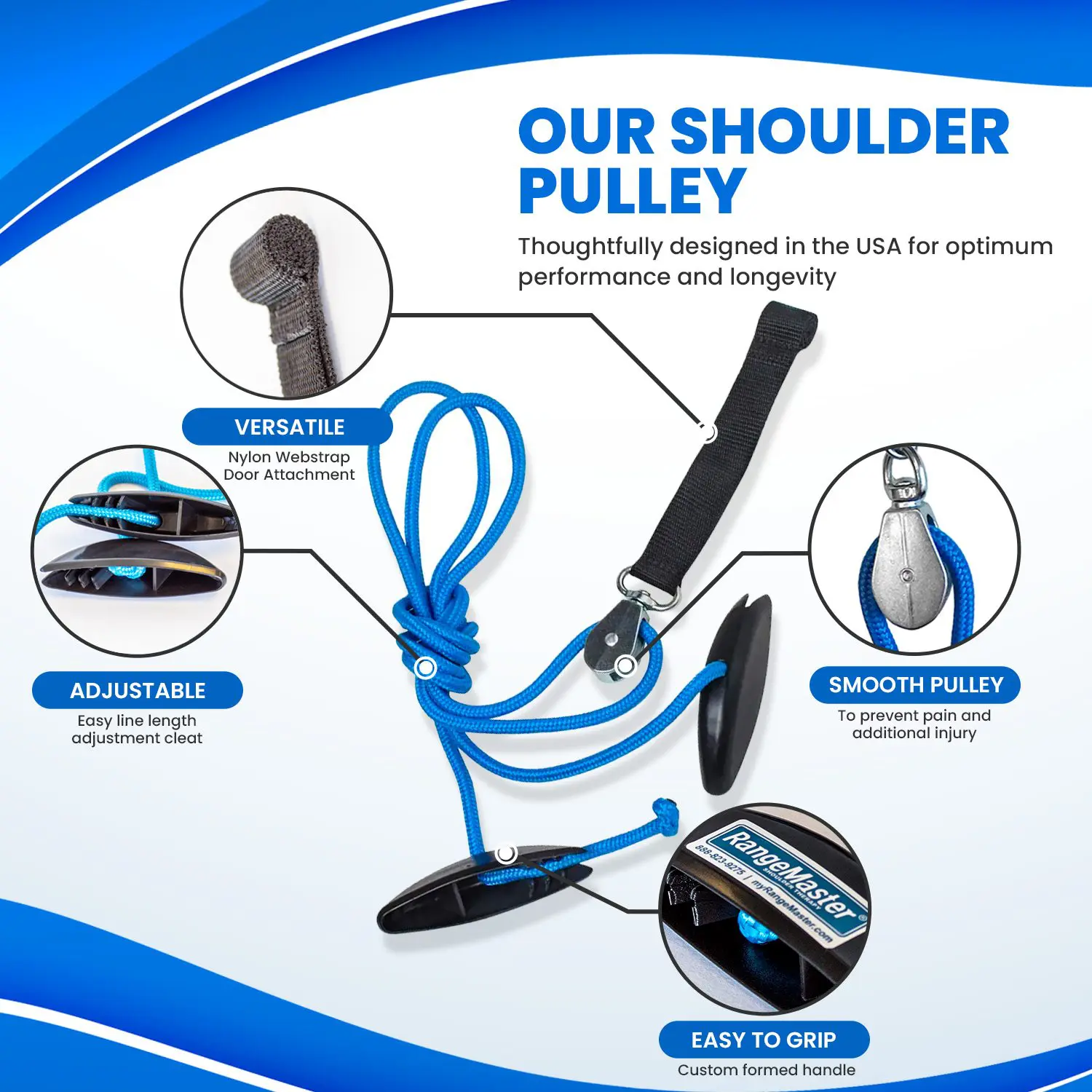Best Shoulder Pulleys for Frozen Shoulder for 2022
This article has been updated on 02/17/2023 by author – Anthony Maritato, PT
Are Shoulder Pulley Exercises Good for Frozen Shoulder (Adhesive Capsulitis)?
Yes, shoulder pulley exercises are a great way to unfreeze a frozen shoulder. A licensed physical therapist will prescribe a specific home exercise program using an over-the-door pulley system for home physical therapy. Rehabilitating a frozen shoulder may take between 6 weeks and 18 months depending on the severity and cause of the symptoms.
Why Are Shoulder Pulleys So Great for Frozen Shoulder Rehab and Home Physical Therapy?
Over the door shoulder pulleys are great because they are inexpensive, easy to use, allow the patient to perform passive range of motion, active assisted range of motion, and even resistance training without any extra weights or equipment.
Are Shoulder Pulley Systems Dangerous?
Over-the-door shoulder pulleys can be safe when used correctly, but like any rehabilitation device, there is some risk of injury if they are used improperly.
Improper use of over-the-door shoulder pulleys can potentially lead to shoulder or upper back injuries. For example, if the pulley is not securely fastened to the door or if the individual is pulling with excessive force, it can cause the pulley to dislodge and the individual to fall or suffer other injuries. Additionally, if the individual does not use proper form while performing exercises with the pulley, it could cause undue strain on the shoulder joint or surrounding muscles.
It is important to use over-the-door shoulder pulleys under the guidance of a physical therapist who can assess your condition, instruct you on proper use and technique, and monitor your progress. They can also identify any potential risks or complications and make appropriate modifications to your treatment plan.
Overall, when used properly and with proper guidance, over-the-door shoulder pulleys can be an effective tool for shoulder rehabilitation.
Best Overall Pick – Shoulder Pulley in 2023
* Rangemaster Blue Ranger Shoulder Pulley
RangeMaster has been the undisputed leader in the shoulder pulley market for longer than I have been a physical therapist.
The high quality construction is what gives RangeMaster the advantage over discounted pulley systems. The Blue Ranger Shoulder Pulley will last several years in my clinic despite heavy daily use. Spending a couple of extra dollars is well worth the investment when you think about what is at risk.
More Resource links:
Avoid Cheap Shoulder Pulley Systems
Cheap shoulder pulleys are cheap for a reason. They are made with inferior-quality materials. You can see from the image below that the plastic fastener broke on this pulley system and the user tied the two ends together with a string.
If I were a patient rehabilitating my rotator cuff repair or trying to stretch a frozen shoulder I would not want the success of my rehabilitation to depend on a piece of string.
These less expensive pulley systems are not saving you that much money. A typical high-quality pulley might cost close to $20 and will last a lifetime whereas a cheaper pulley might cost $10 and break during moderate use.
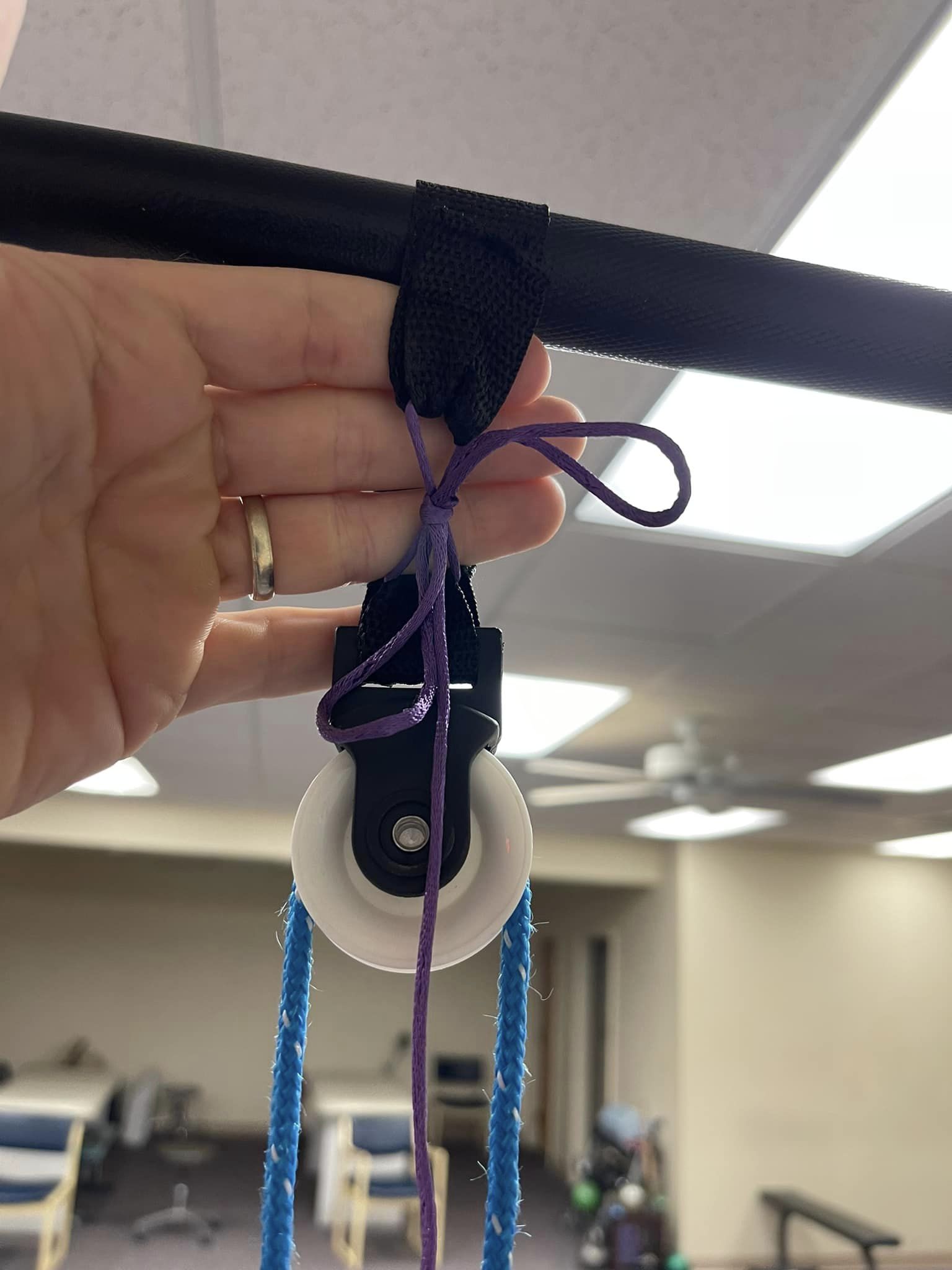
What is Frozen Shoulder (Adhesive Capsulitis)
Frozen shoulder, also known as adhesive capsulitis, is a condition in which the shoulder joint becomes stiff and painful, making it difficult to move the arm. The exact cause of frozen shoulder is not well understood, but it is thought to be related to inflammation and thickening of the capsule that surrounds the shoulder joint.
The condition typically progresses through three stages:
- Freezing Stage: The shoulder becomes increasingly stiff and painful over time, and range of motion becomes limited. This stage can last for several months.
- Frozen Stage: The shoulder remains stiff, but the pain may subside. This stage can last from several months to a year.
- Thawing Stage: The shoulder gradually regains range of motion and returns to normal. This stage can last several months to a year.
Risk factors for developing frozen shoulder include diabetes, previous shoulder injury or surgery, and prolonged immobilization of the shoulder joint, among others. Treatment for frozen shoulder typically involves a combination of stretching exercises, manual therapy, and sometimes medication. In some cases, surgery may be necessary to loosen the tight capsule around the shoulder joint.
More Articles

Lymphedema LIVE Class Registration
WHAT: In this LIVE class you will learn what you can do to manage swelling, reduce pain, and improve healing after a total knee replacement surgery. Dr. Andrea Leifer, PT, CLT-LANA is a lymphedema expert and educator. WHEN: March 31, 2021 at 3PM EST WHERE: Online Zoom...
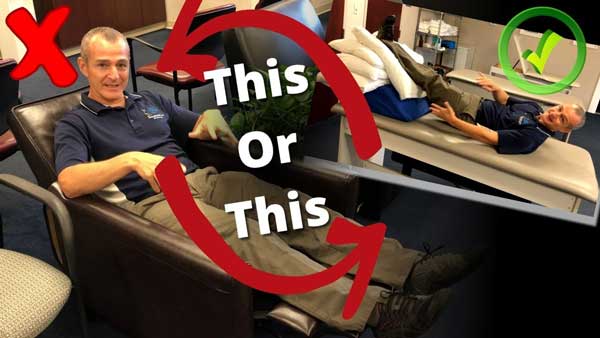
10 Questions About Leg Elevation After Knee Surgery
Physical Therapist Anthony Maritato, PT Recommends the 3 BEST leg elevation pillows after knee replacement surgery | 10 Common Questions Patients Ask
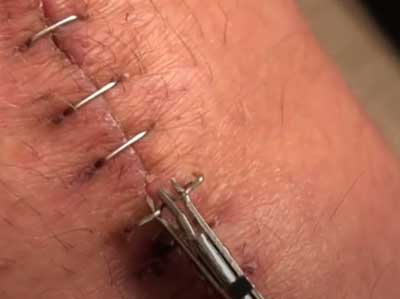
Does It Hurt To Have Staples Removed After Knee Replacement Surgery
Removing Staples After Knee Replacement Surgery Staple removal is often painless and quick. In the following video a person removes his staples at home, but it is always recommended you allow your physician or surgical team remove the staples in their office.Why Are...
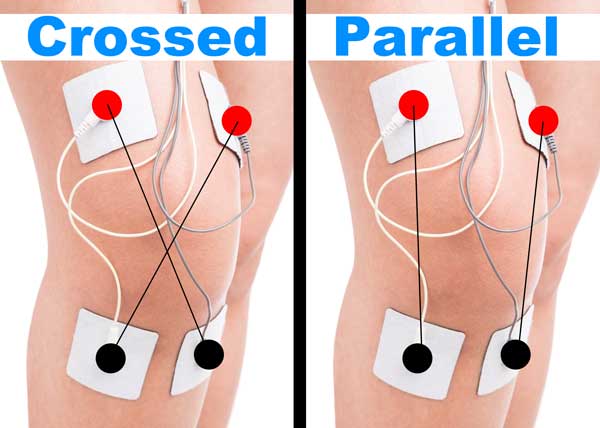
BEST Tens Placement for Knee Pain
Is TENS a Good Way to Reduce Knee Pain? Transcutaneous Electrical Nerve Stimulation (TENS) is a non-invasive, drug-free method for pain relief that has been widely used to manage various types of pain, including knee pain. TENS therapy involves sending low-voltage...
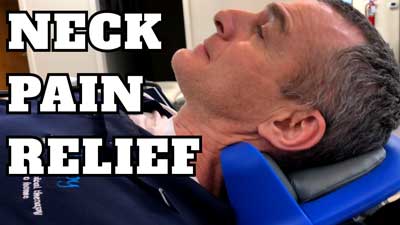
How many times a day can you do Neck Traction
Neck (cervical) traction is most commonly prescribed in 10 to 20 minute episodes. In this article I share the BEST positions to use cervical traction and what you NEED to AVOID when using it.
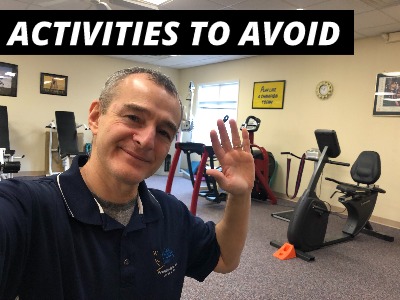
Which Activities Should I Avoid After Total Knee Replacement?
Click here to see a list of activities you should avoid after total knee replacement as well as a BUNCH of activities you may ENJOY.
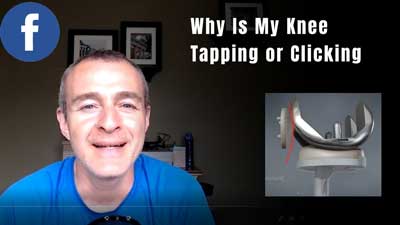
Why Does my Knee Replacement Make Noise?
Would you like to know why your knee replacement makes noise? Is it a grinding? Is it a clicking? Or is it a popping? Snap, crackle, pop may be common after a total knee replacement. Read on to learn why-

How long should I ICE my knee after knee replacement?
Icing after a total knee replacement should be performed for between 10 and 20-minutes. If icing is painful then consider using heat instead. Explore myths about icing in this article.
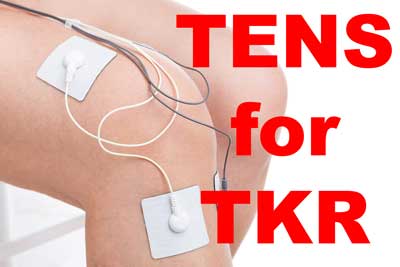
Is tens SAFE to use for knee pain?
Have you been wondering if a TENS unit could reduce knee pain associated with arthritis? A TENS unit may be a great drug free way to reduce pain following a total knee replacement. In this article we will discuss how and when to use a TENS unit for drug free pain relief of knee pain.

Sleeping After Knee Replacement – 3 Best Positions
Finding a comfortable sleeping position after a knee replacement can be challenging. The most common advice is to sleep flat on your back with your surgical knee straight and elevated above your heart. To achieve this, many surgeons recommend propping a pillow under...
